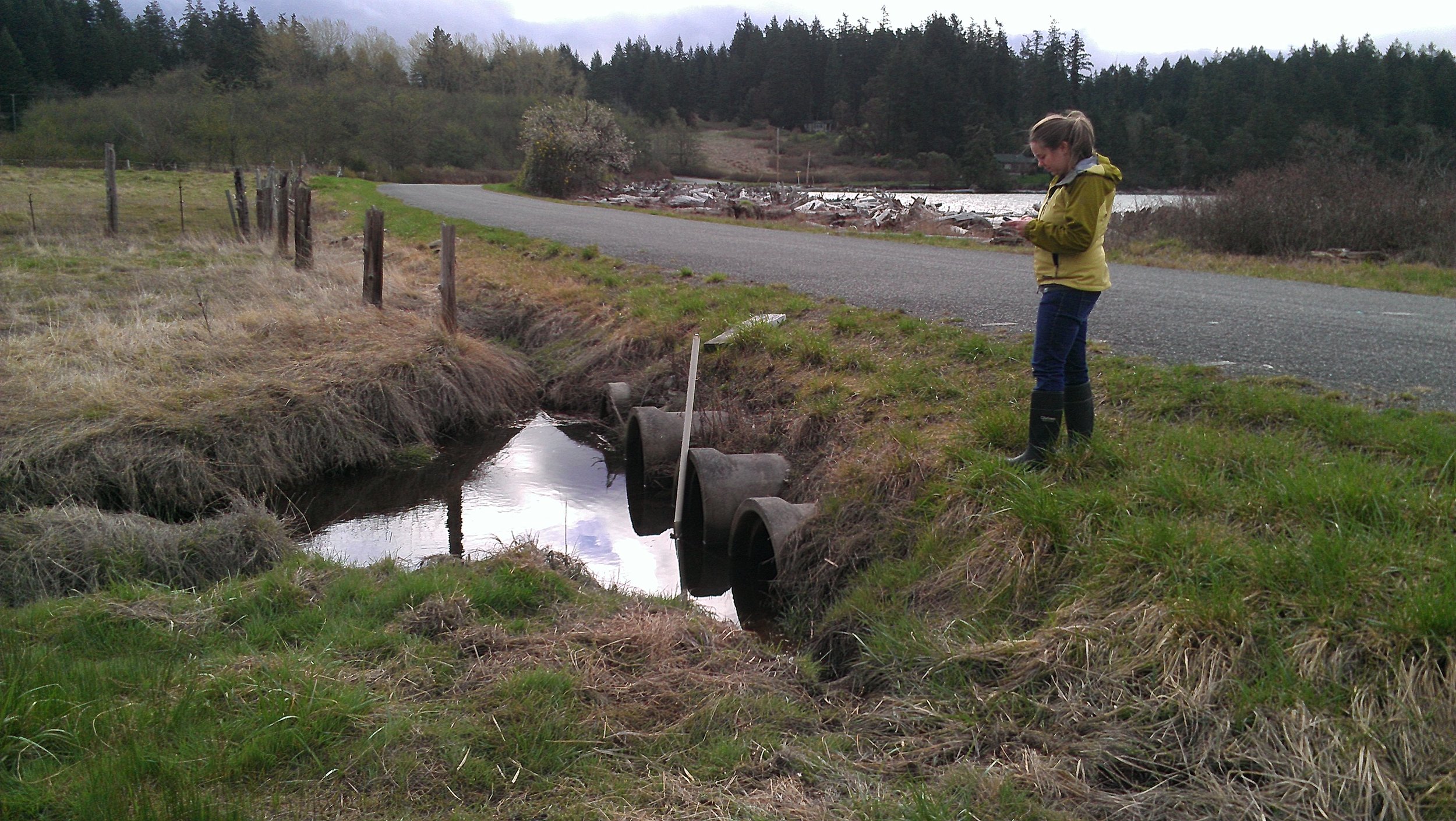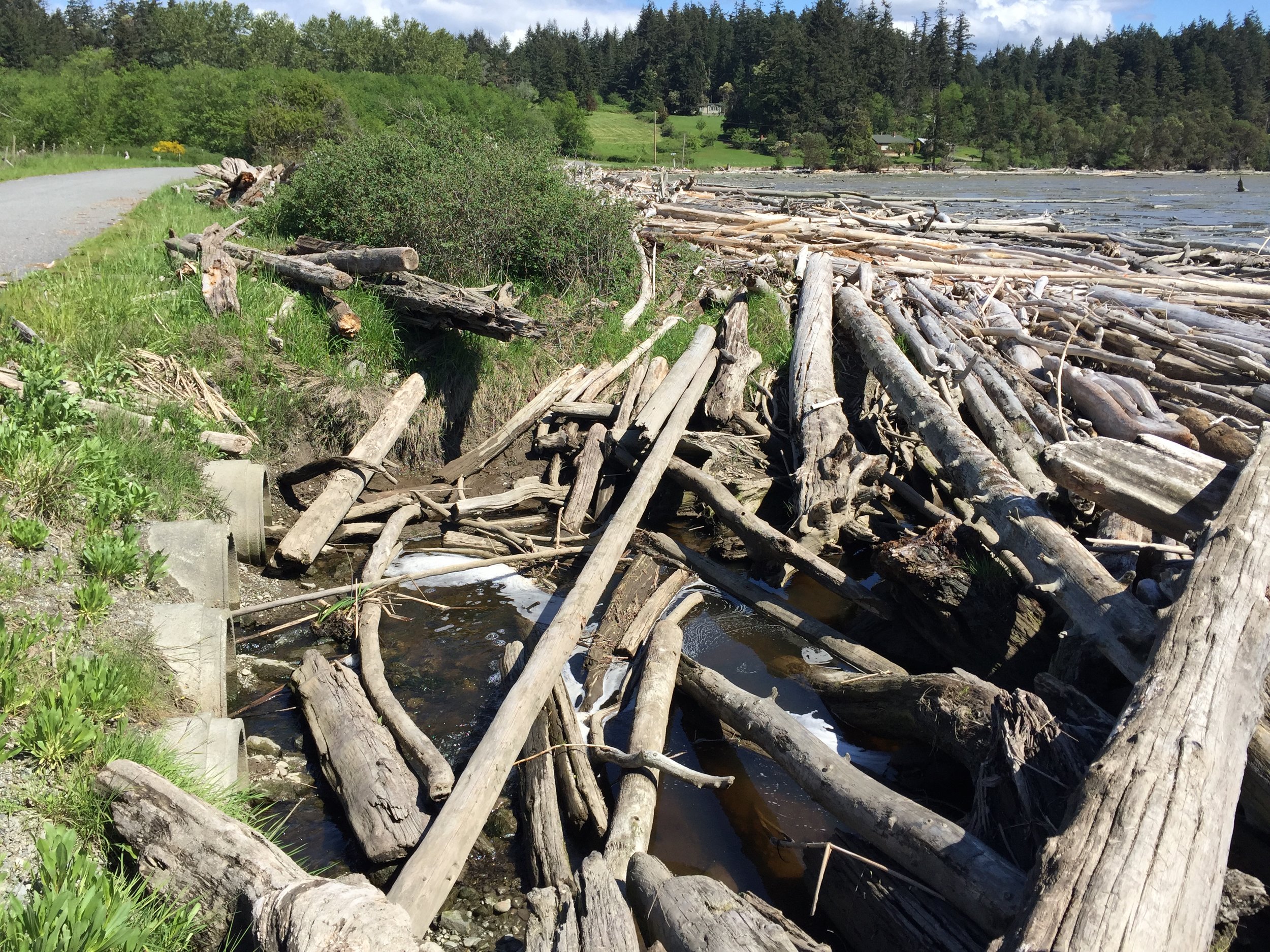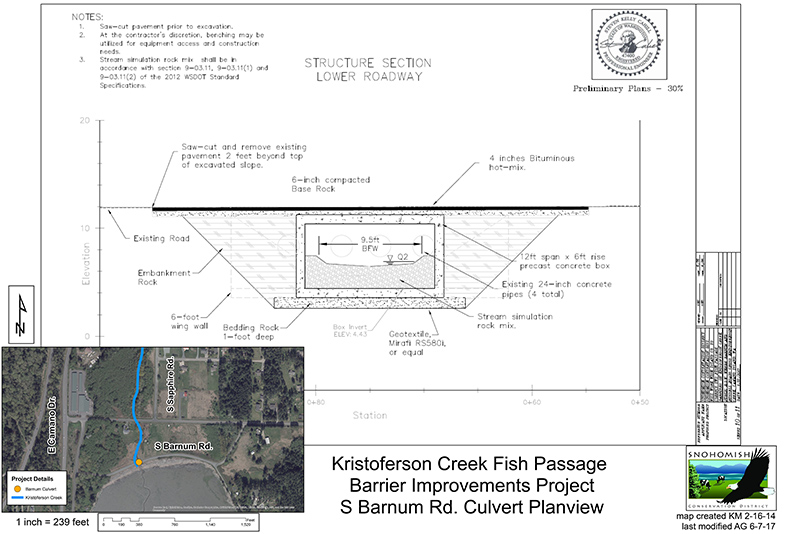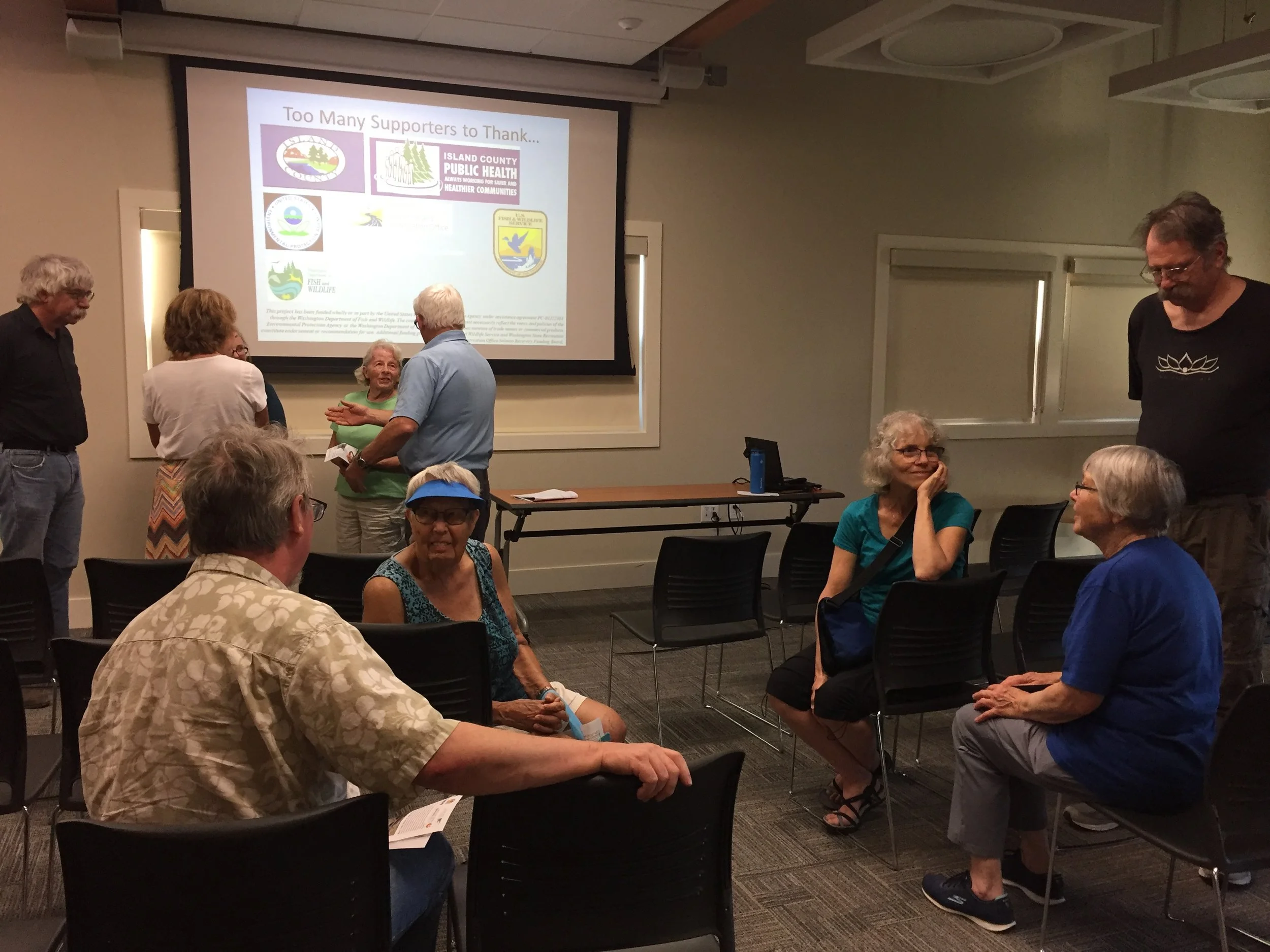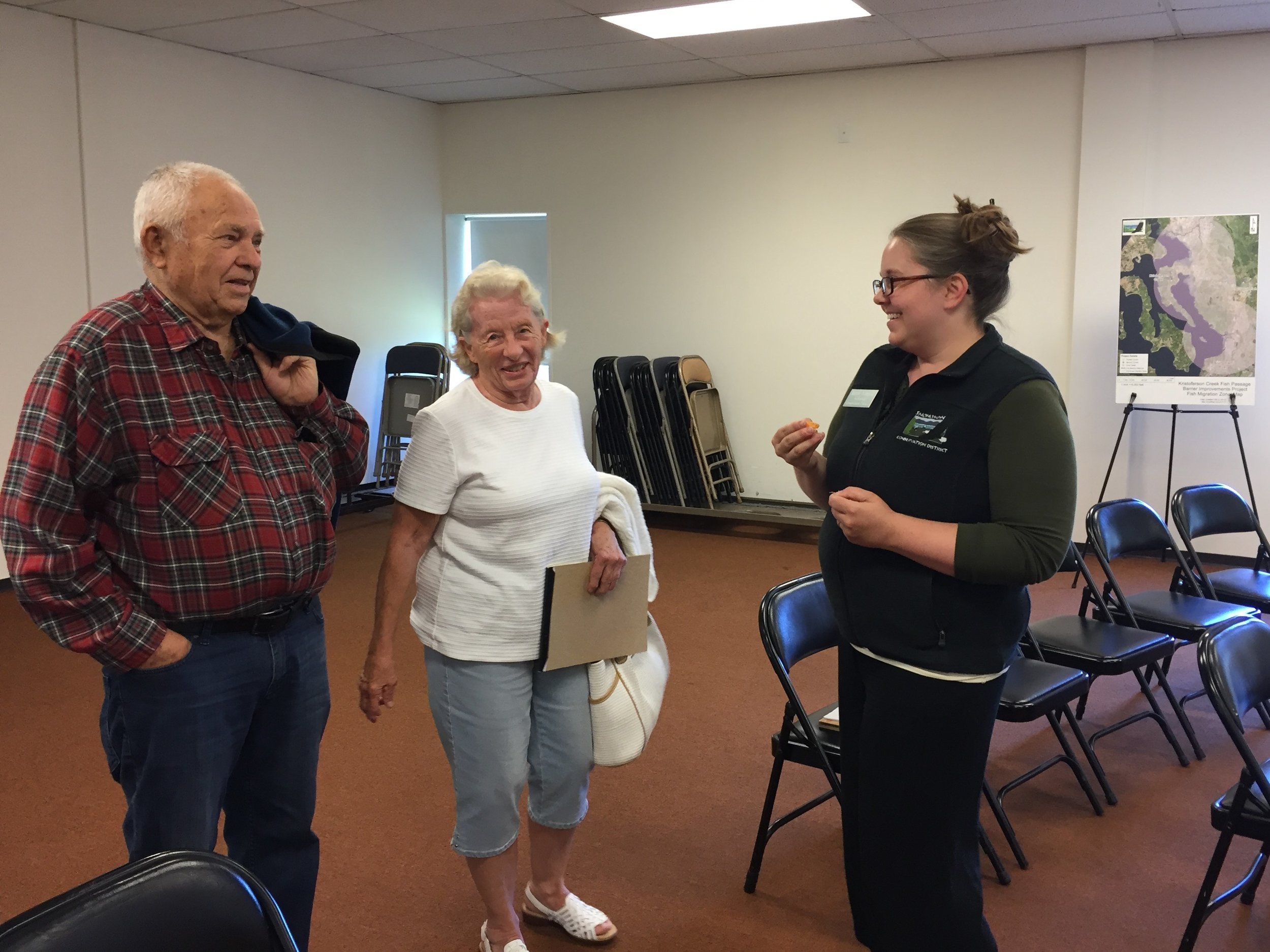Kristoferson Creek Fish Passage Barriers Improved
Small coastal streams, such as Kristoferson Creek on the east side of Camano Island, provide critical habitat for several species of salmon (including threatened Chinook salmon) and trout. Some young Chinook salmon from the Skagit, Stillaguamish and Snohomish watersheds leave their natal streams in winter and spend several months in small, often-seasonal, coastal streams, including Kristoferson Creek and Triangle Cove, a pocket estuary. There they grow larger before migrating to the Pacific Ocean.
The habitat found in Kristoferson Creek is especially critical for these juvenile Chinook because the estuaries of their natal watersheds are heavily degraded. Unfortunately, two culvert groupings at the mouth of Kristoferson Creek, and about 500 feet upstream of the mouth, partially block young Chinook salmon, steelhead, Chum and coho salmon from accessing the creek. The lower crossing at the mouth presented a nearly complete barrier except during high water flows; and at both crossings the water flowing through the culverts was too fast for migrating salmon.
The Snohomish Conservation District partnered with Island County Public Works, which owns these crossings, to replace these blocking culverts with fish-passable culverts. By correcting these barriers, this project will improve passage for juvenile Chinook and steelhead as well as for other fish and opens 1.6 miles of habitat. It complements previous work by a private landowner who fixed two barriers on the creek years ago. Snohomish Conservation District completed construction in summer 2018.
All are photos of the Kristoferson Creek culverts at Barnum Road, one of the two sets of culverts that will be replaced (the other set is at Russell Road). The culverts at Barnum Road are at the mouth of Kristoferson Creek and the first partial barriers to fish coming from and going to Triangle Cove.
Project Area and Design Plans:
Previous Meetings and Updates:
Do you have questions or comments about the fish passage project?
This project has been funded wholly or in part by the United States Environmental Protection Agency under assistance agreement PC-01J22301 through the Washington Department of Fish and Wildlife. The contents of this document do not necessarily reflect the views and policies of the Environmental Protection Agency or the Washington Department of Fish and Wildlife, nor does mention of trade names or commercial products constitute endorsement or recommendation for use. Additional funding provided by US Fish and Wildlife Service and Washington State Recreation and Conservation Office Salmon Recovery Funding Board.


